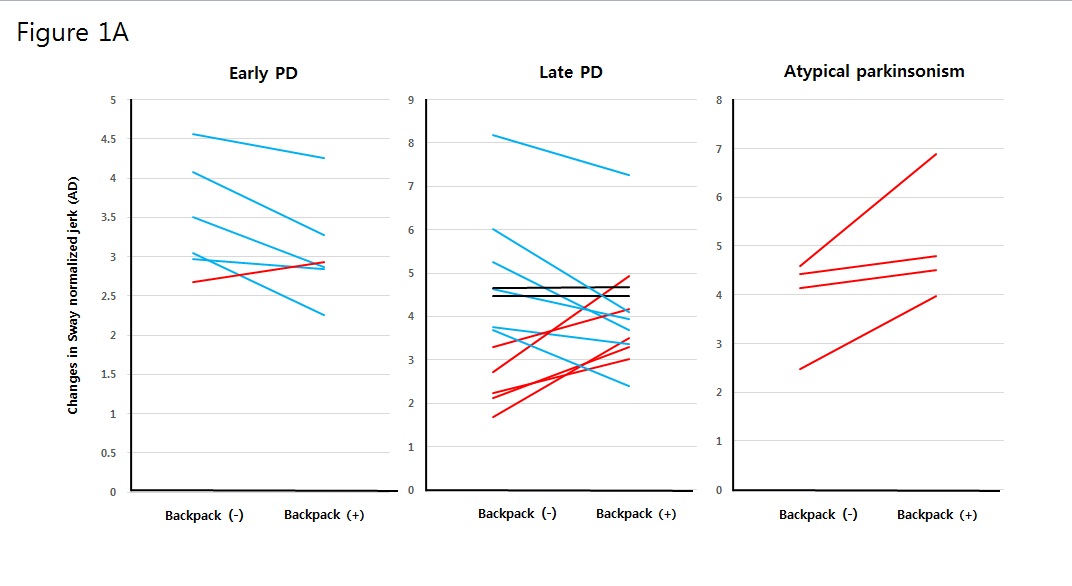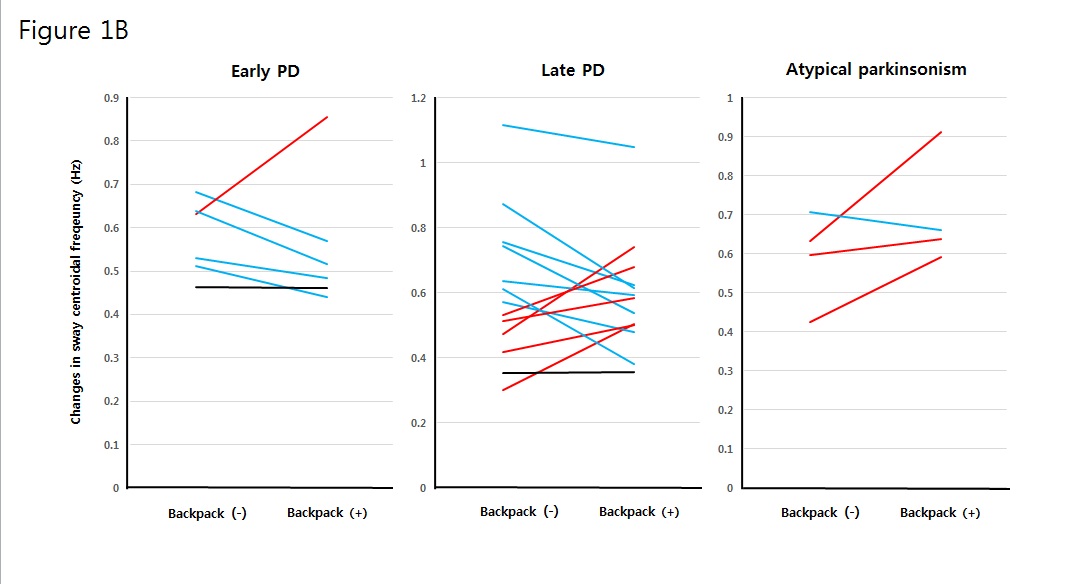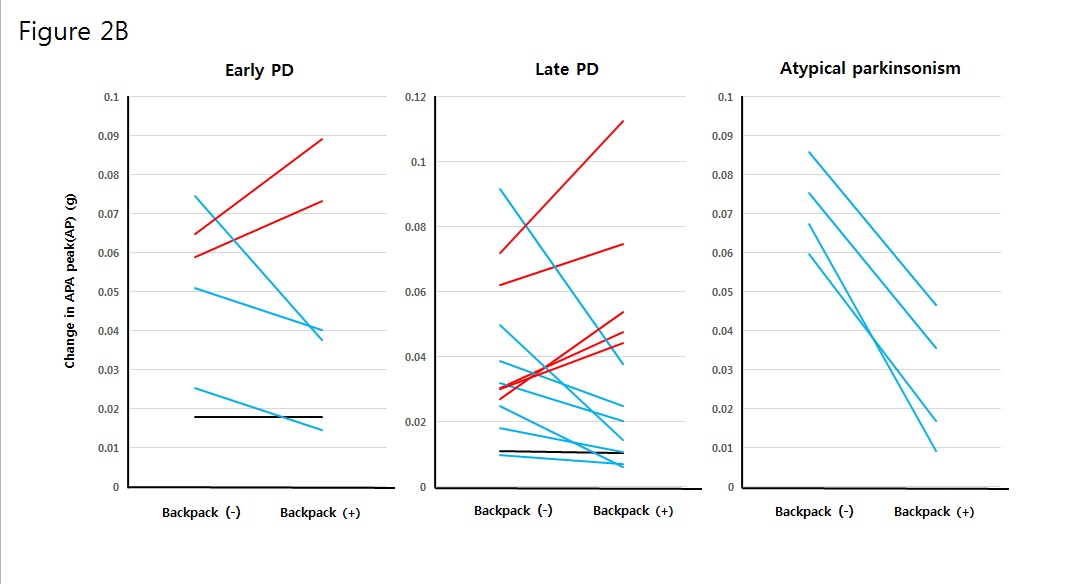Session Information
Date: Sunday, October 7, 2018
Session Title: Parkinsonism, MSA, PSP (Secondary and Parkinsonism-Plus)
Session Time: 1:45pm-3:15pm
Location: Hall 3FG
Objective: To evaluate influence of wearing empty backpack on gait and balance in patients with degenerative parkinsonian syndrome using the instrumented stand and walk test (ISAW) with six wearable inertial sensors.
Background: Gait and balance can be easily disturbed by variable environmental and emotional factors as well in people with degenerative parkinsonian syndrome.
Methods: We recruited total 23 patients with degenerative parkinsonian syndrome who were eligible to study protocol (independent ambulation, normal cognitive function, and no history of cardiopulmonary or musculoskeletal disease) from movement disorder outpatient clinic, Soonchunhyang University Bucheon Hospital (early PD with disease duration <3 yrs, n=6 ; atypical parkinsonian syndrome with disease duration <3 yrs, n=4; late PD with disease duration >3 yrs, n=13). All the subjects gave their consent and then instructions were explained. We conducted two separated sessions of ISAW test (without and then with wearing empty backpack) in all subjects using six Opal inertial sensors (APDM, Inc) attached on all four limbs, anterior chest and lumbar region. Gait and balance measures obtained from each subcategory of ISAW test (sway, gait, anticipatory postural adjustments, and turn) were recorded during each session and compared graphically between the two conditions across the three groups.
Results: Clinical and demographic characteristics of the participants are as follows: early PD group (n=6, age=68.0+11.9 yrs, BMI=22.9+3.1, disease duration=1.93+0.6, UPDRS motor score=14.8+7.7, HY stage=1.83+0.6), late PD group (n= 13, age=71.08 yrs, BMI=24.33+3.4, disease duration=7.19+3.6, UPDRS motor score=21.54+7.1, HY stage=2.38+0.5), and Atypical parkinsonian group (n=4, age=71 yrs, BMI=26.11+2.8, disease duration=2.53+1.9, HY stage=2.13+0.8). In the condition of wearing empty backpack, sway-normalized jerk and sway-centroidal and median frequencies showed strong tendency of prominent decrease in early PD group, while such trend disappeared in late PD group and, on the contrary, rather increase was observed in atypical parkinsonian group (Fig 1A-C). APA peak (anterior-posterior) decrease was prominent in atypical parkinsonian group (Fig. 2).
Conclusions: In this small sample study, we found that wearing empty backpack alone could affects gait and balance variably in patients with degenerative parkinsonian syndrome.
References: 1. Hyung, E.-J., et al. (2016). “Influence of load and carrying method on gait, specifically pelvic movement.” Journal of physical therapy science 28(7): 2059-2062. 2. Lee, K. H., et al. (2017). “Back Extensor Strengthening Exercise and Backpack Wearing Treatment for Camptocormia in Parkinson’s Disease: A Retrospective Pilot Study.” Annals of rehabilitation medicine 41(4): 677-685.
To cite this abstract in AMA style:
S. Lee, D. Heo, J. Park. Influence of Wearing Empty Backpack on Gait and Balance in Patients with Degenerative Parkinsonian syndrome [abstract]. Mov Disord. 2018; 33 (suppl 2). https://www.mdsabstracts.org/abstract/influence-of-wearing-empty-backpack-on-gait-and-balance-in-patients-with-degenerative-parkinsonian-syndrome/. Accessed April 1, 2025.« Back to 2018 International Congress
MDS Abstracts - https://www.mdsabstracts.org/abstract/influence-of-wearing-empty-backpack-on-gait-and-balance-in-patients-with-degenerative-parkinsonian-syndrome/




